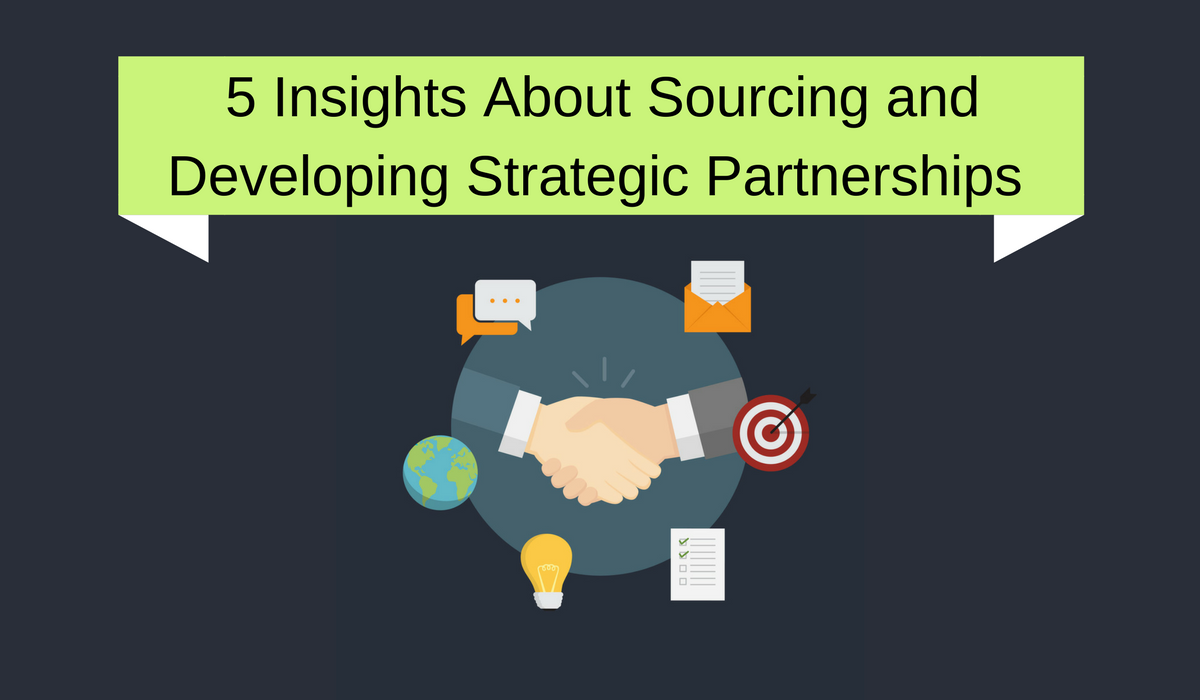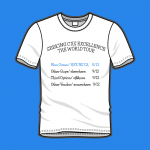5 Insights About Sourcing and Developing Strategic Partnerships

If your company is preparing for the fiscal year, you likely have a stream of questions flowing through your mind: Are your goals for the fiscal year lining up with long-term priorities? Will your target budget support those goals? Will your customer experience be strengthened or hit a slump because of the programs in that budget?
Not to add another thing to your plate (sorry), but there’s another question to ask that can impact all those answers: Is this the year customer care outsourcing takes a more central role in your go-forward plan?
We sat down with Peter Longo, Director of Strategic Sourcing and Logistics at St. Michael’s Hospital in Toronto, to discuss how partnerships with service suppliers like outsourced contact centers can impact your business objectives. In his funny and outspoken style, Peter provides valuable insights on:
- The Role of Procurement
- Identifying Strategic Partnerships
- The Value of Cultural Alignment
- Achieving Best Total Value
- Defining Long-Term Partnerships
Read this Q&A to discover why asking around for contact center RFPs may be a great idea – or dive deeper into what it takes to achieve strategic goals through outsourcing in our eBook.
The Role of Procurement
How would you describe the role of procurement in an increasingly complex business landscape?
The thing about strategic sourcing and supply chain is that you usually don’t hear much about it unless something goes wrong. They are the unsung heroes of the battle, making sure everything’s in place so that people on the front lines can take care of their everyday job.
The core role of strategic sourcing is to facilitate what the stakeholder is looking for, finding services and products on behalf of internal customers so they get what they want and need for the best value. Ideally, the strategic sourcing team needs to understand the space in which they’re sourcing. In fact, they should understand it better than the stakeholders themselves. What are the table stakes, the trends, the market research, the vocabulary?
If sourcing isn’t an expert in the industry before they go to RFP, and the contract isn’t clear as a result, there will definitely be issues that come up later. The framework of a successful partnership is the RFP, and the subsequent contract is what sets the tone.
An effective sourcing process means that the contract will survive the partner relationship despite any changes in the organization or turnover in the workforce.
Identifying Strategic Partnerships
Organizations are increasingly looking for strategic partners rather than vendors. As a sourcing professional, how do you bring the intangible idea of “strategic partnership” into the objective procurement process?
Because a “strategic partnership” is such an intangible concept, it can be tempting to go with your instincts or blindly trust a network referral. But the strategic sourcing process needs something more objective than that to prove to stakeholders that this will be a strategic partnership. Thus, the RFP is essential. It’s a tool that can accurately represent stakeholder requirements and consistently evaluate vendor responses.
Of course, the RFP is just the first step. Evaluating the potential of a partnership takes more than just paper responses to the RFP. It also face-to-face meetings and collaboration with the vendor team. It’s important to assess how they differentiate themselves from their peers and what their added value is in an otherwise commoditized industry.

Ideally, you will have a supplier relationship management program that provides sourcing with an objective framework for what a strategic long-term partnership looks like. The program will dictate how frequently the company and supplier meet for business reviews (I recommend quarterly; annually at the very least) and will set the stage for expectations and governance.
In these meetings, the supplier should be eager to approach any issues, seeking out the root cause and taking corrective action, all in the interest of making the partnership more effective. On the other hand, a vendor that is concerned only with meeting industry standards and parameters is not a partner who will be able to take a commoditized service and differentiate themselves or collaborate with their clients to make things work.
The Value of Cultural Alignment
How much of a factor is cultural alignment in your decision-making process for professional services?
As a sourcing professional, I have to ensure that our company culture is reflected in the RFP and also that the document is customized to the specific industry in which we’re sourcing. We can’t take an RFP template that was written for manufacturing and use it verbatim for sourcing a contact center.
It’s my expectation that the RFP is flavored with our history, our mission, and our values. If we don’t express these upfront, we can’t expect the vendor community to know if and how to align their own values. If they don’t care about our mission, or if their own values are misaligned with ours, then we know to walk away.
Aligning cultures in the decision-making process is also crucial because the process is about more than the one person running the RFP and conducting the sourcing. It’s about the people we bring to the table and the people the vendor brings to the table connecting. Let’s make sure our stakeholders and our senior leadership have a strong connection with this partner.
When these teams meet, is there a tendency towards innovation, talk of collaboration? It’s a two-way street. We need to know that we’ll do an amazing job together. That takes careful organizational and cultural alignment, and if it’s missing, we have to know at what point to withdraw.
Achieving Best Total Value
Return on investment is crucial, but its measurement isn’t always tangible. What factors should be acknowledged to create a partnership that enables the best total value?
Partnering with a supplier isn’t just about buying for today but also for the future. The best total value is found when a partner does the work to help you take your business to the next level.
Yes, ROI is found in tangible dollars, but we’re also talking about factors such as:
- Customer satisfaction
- Innovation
- Process improvement
You need a partner that understands current and future trends in the industry and how they can walk with us on that journey as the space evolves.
We should be able to have safe and open discussions with a partner about our pain points and issues and how we can work to solve those together. In short, the best total value is achieved when you’re not simply relying on the contract.
The contract sets the framework for the day-to-day management, but you have to go beyond it to take the partnership to the next level. Essentially, the best total value is possible when the supplier and the client think together as if they are one company.
Defining Long-Term Partnerships
A superior strategic sourcing process is future-oriented. How do you define or envision a successful long-term relationship with a third-party partner, particularly when it comes time to potentially renew a contract?
A successful long-term supplier relationship is one in which there is mutual effort every step of the way to make each other better.
I like to envision this ongoing relationship as if the two partners were climbing a mountain – picture Mount Everest or Kilimanjaro. At the bottom of the mountain, there’s no commitment between supplier and buyer; there are no contracts, agreements, pricing, or anything. The only interaction so far is the RFP.
As the two hike together, they reach the first level, which is a contract, under which there is secure pricing and ongoing transactions. It’s pretty basic, but the next level up is where there’s skin in the game: there are Service Level Agreements, and the supplier understands that they must fulfill their commitment or risk the relationship.
The next level is where it starts to get interesting. Now, both partners are able to walk in each other’s shoes on this mountain climb. There’s joint process improvement, with both sides working to make the relationship better on a day-to-day basis.
Climbing higher still, they reach the level of real innovation. In the contact center, this is when both partners are focused on navigating the customer experience with an innovative approach to improve customer satisfaction. Whether it’s through call center technology or customer journey mapping, they are aiming to wow the customer and build a seamless experience. Ideally, the customer won’t even recognize that the company’s customer service is outsourced to a contact center. That’s how closely the two partners have aligned themselves at this level.
The final level is value chain optimization. Both partners work towards a comprehensive understanding of cost savings, quality improvements, efficiencies, risk mitigation, service improvement, and more. They’re asking the questions, how can they be a better supplier, and how can I be a better client? There is a joint commitment to mutually grow their businesses through the partnership.
Successful Procurement Planning in the Contact Center
Peter’s insight is highly valuable for any sector, but especially in the contact center industry. The quality of the partnership between your company and your outsourced contact center is paramount to your customers’ satisfaction and loyalty.
For more insight, read our recent article on questions to ask in the contact center procurement process, or skip right to our list of contact center RFP questions.
Ready to start building a strategic customer care partnership? Schedule a call to learn how Blue Ocean can help.






